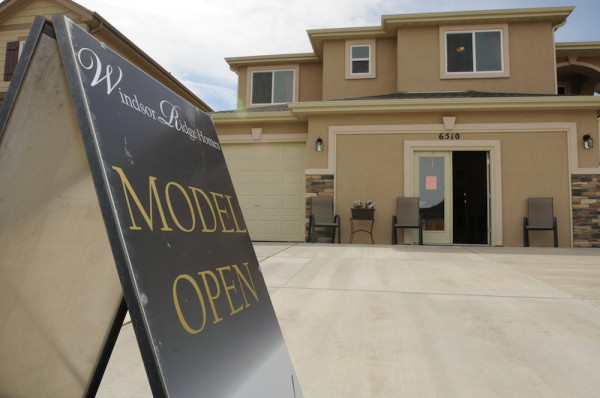

Veterans looking to purchase a home or refinance with a U.S. Department of Veterans Affairs’ home loan program over the next six weeks may find it harder than usual to close on adjustable-rate mortgage loans. In fact, it may be next to impossible.
Last February, the Consumer Financial Protection Bureau passed legislation requiring mortgage lenders to alert consumers of rate changes 45 days in advance. Previously, lenders only had to notify consumers 30 days in advance. The bureau gave the Federal Housing Administration and Department of Veterans Affairs home loan programs until Jan. 10, 2015, to modify their adjustable-rate mortgage programs to comply with the new standards.
“When market rates increase, homeowners with an adjustable-rate mortgage will see their monthly mortgage payment go up as well,” said Will Farrar, CEO of Flagship Financial Group said in an email. “The Consumer Financial Protection Bureau’s adjustable-rate mortgage regulations were created to give veteran homeowners more time to adjust family budgets for the increase.”
When consumers take out an adjustable-rate mortgage loan, the lender gives the borrower an initial lower rate with the agreement that that rate could go up or down at a later date depending on how the market is doing. This results in lower monthly payments for consumers in the beginning, but in order to change the terms of the loan at a later date (such as if the rate goes up), consumers must refinance the loan.
This sounds great for consumers and veterans alike, right? After all, they now get 15 days extra notice if their rate changes.
That would be the case if Ginnie Mae, the government-sponsored enterprise that purchases VA and Federal Housing Administration loans, hadn’t told lenders that they would not purchase any new adjustable-rate mortgage loans until April 1, 2015. Until then, the organization will only purchase these loans under the old 30-day program so they can clear out those loans to comply with the Consumer Financial Protection Bureau’s new regulations.
“Ginnie Mae is trying to minimize the confusion in the capital markets on how to evaluate pools. We established a definitive definition that if a pool was issued after a certain date all the loans would have the new 45 day look-back and any pools issued before that date would have a 30-day look back,” said Ginnie Mae spokesperson Gina Screen in an email. “Ginnie Mae’s goal to make sure the change had minimal impact on the market.”
When lenders sell mortgage loans to Ginnie Mae, they package them up into what is known as a pool. Essentially what Ginnie Mae is trying to say is that this is the simplest way it knew how to make the transition without creating confusion by having different loan terms in different pools.
This leaves lenders in a bit of a dilemma. Since Ginnie Mae will not purchase new mortgage loans until April 1, many banks do not have enough capital to offer and process them, leaving veterans unable to get the best rates.
“This situation is very problematic for lenders and veterans alike. Lenders risk disappointing their customers, and may even face financial difficulties while waiting for Ginnie Mae to purchase adjustable-rate mortgages again,” said Farrar. “On the other hand, veterans now face losing out on their dream home because they cannot secure a mortgage loan, or they’re stuck paying higher interest rates until they can refinance.”
The Consumer Financial Protection Bureau did not respond to a request for comment.
Veteran Affairs hybrid adjustable-rate loans are different than conventional adjustable-rate mortgages. With a VA adjustable rate, your initial rate is protected for three to five years, depending on the terms of the loan. After that, your rate can go up according to the market’s current rates, but the adjustment is capped at 1% per year, meaning if you take out an adjustable-rate, VA hybrid loan at 1.75%, after three years, it can only increase to 2.75%.
Since lenders do not have enough money to process VA loans without Ginnie Mae purchasing them, veterans may only be able to take out fixed-rate mortgage loans. Fixed-rate mortgages have higher starting rates than adjustable-rate loans, but that rate does not change after closing.
This impacts every veteran who currently wants to purchase a new home or refinance his or her existing loan in the next six weeks. They will be forced to either close a fixed-rate loan and pay a higher interest rate or wait until April 1 to begin the process of taking out an adjustable-rate loan.
“A few lenders are trying to scrape something together; we’re all calling our banks to see if they will extend our credit lines so we can float the new hybrid adjustable-rate mortgage loans until April 1,” said Farrar. “Overall, our goal is to help veterans interested in adjustable-rate Veteran Affairs home loans as much as we can. It’s not their fault the regulations haven’t been implemented smoothly. Their wallets shouldn’t take a hit because of it.”
While the Consumer Financial Protection Bureau’s new regulations are meant to protect consumers, its implementation is only hurting them. It’s not fair that our veterans’ benefits are stuck in limbo due to the lack of planning and miscommunication between two government agencies. Hopefully future financial regulations will be implemented without putting our veterans at an economic disadvantage.
